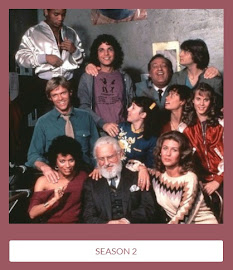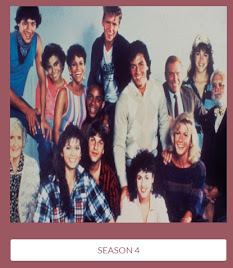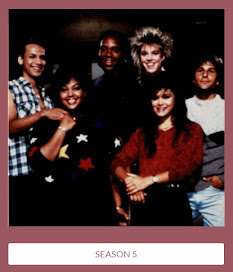Debbie Allen’s
Technique? It’s All About Tough Love
By Gia Kourlas
Published Nov. 24, 2020
Was Lydia Grant, the
dance teacher Debbie Allen played in both the film and television versions of
“Fame,” really a fictional character? Wielding a cane — in homage to one of Ms.
Allen’s own ballet teachers, Madame Tatiana Semenova — Grant tells her
students: “You’ve got big dreams; you want fame. Well, fame costs, and right
here is where you start paying; in sweat.”
To my great delight,
Ms. Allen shares that no-nonsense perspective — it’s not about coddling. The
new film “Dance Dreams: Hot Chocolate Nutcracker” is certainly about the
vibrant and charming reimagining of the holiday classic that the Debbie Allen
Dance Academy presents each season. But it is just as much about Ms. Allen
herself.
It shows that this
dancer, actor, choreographer and director is also something else: an educator,
and a formidable one at that.
At her academy, in
Los Angeles, technique is offered in many genres, but the training is more
expansive than just learning steps. Ms. Allen’s students study dance history;
they must know about the choreographers Katherine Dunham and Bob Fosse; but
they also must know about the artist Jean-Michel Basquiat because, to her,
understanding dance is about understanding all the arts.
“They have to know
everything about ‘West Side Story,’ the quintessential American musical,” Ms.
Allen, 70, said in a phone interview. “Who is Irene Sharaff, the great costume
designer? These are things that will get lost, and I want my young people to
speak the language of dance anywhere on the planet. And they do.”
At the first
audition in the documentary, she tells some young girls that they need more
training before they will get a part in the show. A moment later, she consoles
a sobbing girl while simultaneously studying a sheet of paper. “You just need
more class,” she says. “It hurts my feelings, too.” (Love.)
To a group of
teenage girls on the floor, their legs parted in a straddle, Ms. Allen stresses
that they won’t make it to the next level by “going around to the mall and
being cute in heels.” She tells them: “Take those high heels off and get down
on the floor and stretch.” (Tough.)
Ms. Allen doesn’t
need a script to be a quote machine. She recently spoke about her own journey
as a student, her twist on “The Nutcracker,” and why dance — and all of the
arts — should be considered essential.
What follows are
edited excerpts from the conversation.
The director of
“Dance Dreams,” Oliver Bokelberg, has a daughter at your school. How did the
project begin?
He wanted to capture
a few pictures and before you knew it he was there all the time. And then one
day he said, “Debbie, can I put on this microphone?” I said, “Oliver, get out
of my way, you can’t interrupt me!” And then I honestly would forget that he
was in there. He was shooting all the time.
It’s real
cinéma-vérité, where you’re a fly on the wall. I was true to what the moment
needed. And when the students needed to be blasted for coming in late or not
working hard enough, it’s what I do, it’s how I train them every day.
Why was it important
for you to feature so many children in your “Nutcracker”?
In the middle of a
traditional “Nutcracker,” my son screamed out loud, “Mom, when is the rat
coming?” So I knew they wanted to see a rat. I decided to let the rats take
over the story. I created these characters that kind of take you through the
journey.
But more important,
I focus on the young performers because I wanted to create something where they
would see themselves on that stage.
You’re busy with
other projects, including your work on “Grey’s Anatomy” (acting, directing and
as a producer). Why is having a dance school so important to you?
I had to send my
child Vivian across the country to go to the Kirov School [in Washington]
because there was no school here that I thought was the right kind of school.
She was there for several years. And when she finally called home crying, I was
like, OK, that’s it. [Vivian was told she could never be a classical dancer.]
It was time to have
a school. I call it an academy. Something that they would commit to. And if
they would commit, I would commit.
I have missed
directing so many movies or starring in this or starring in that because of the
children. I just missed doing something with Lin-Manuel [Miranda]. But I can’t
leave my kids. And this is something that helped me when I was young.
How?
When I was a kid in
Texas battling racial segregation and all of that foolishness, dance is what
helped me pull through. Kids need that.
You know, they don’t
list us as essential, but they need to change that model right now in the
middle of this pandemic. The arts is essential for people. It keeps them
mentally balanced and feeling hope and feeling confident.
In the film, you
speak about the racial injustice you faced in studying to become a ballet
dancer. What do you hope for in terms of more equality in dance?
I don’t just hope, I
do. I create an environment that is welcoming to every person who has the
spirit of the dance in them regardless of their body type or their ethnicity or
their economic background.
I’m curious about
your time in New York and when you discovered choreographers outside of ballet,
like Martha Graham. What was that like?
I discovered them
when I was at Howard University. I was a freshman, and my mother feared I might
get lost in the academia and the fraternities and the cultural richness of it
all. So she found a dance festival in New London, Connecticut. Martha Graham
was there. Twyla Tharp was there. Donald McKayle was there. Katherine Dunham’s
protégé Talley Beatty was there. Alvin Ailey was there. In one summer. Can you
imagine what that was like? Judith Jamison and Dudley [Williams] wanted me to
join Alvin Ailey because I was killing that “Revelations.”
What happened?
Alvin said, “She’s
too young,” and I’m like, “No, I’m not, I’m not.” [Laughs] I was 17, and I was
ready to drop out of college and, oh God, did I want to go. But that was the
beginning. By the time I graduated from Howard and stepped foot on the street
they called Broadway, I was in class with Richard Thomas — he and his wife ran
the New York School of Ballet. You’d look up and Margot Fonteyn would be in
class. Nureyev would be in class. New York, my God, it was a training camp.
I remember
auditioning for a show and not being chosen. And at the end of the audition,
the director came over to me and told me how talented I was, but that he didn’t
need another brunette in the show.
And we know what
that is code for.
OK? So what I’m
passing on and giving to my kids is that they know they belong everywhere.
Because isn’t
passing on that confidence what helps to make a dancer, too?
Yes, it is. You can
go run the world. You could train as a dancer and go to Washington, honey, and
pull that thing together. I always say I wish I could put them all in dance
class right now and get this mess straightened out.
What would dance
class do?
It would remind them
that there’s something more powerful than they are. And that it’s not just you.
When you’re dancing in the ensemble, you have to be a part, and if you’re the
leader of that group, then you have to absolutely know where you’re going.
Everyone’s following you. You cannot take the wrong step and end up in the pit.
The Power of Dance
Class










































No comments:
Post a Comment